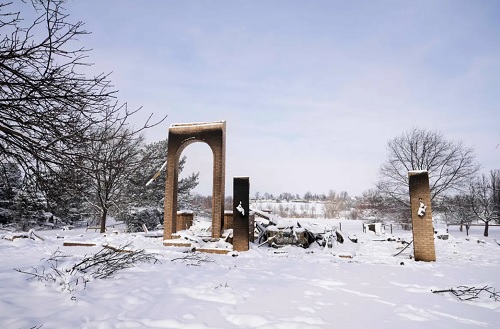AM Best has warned that demand surge and inflation will amplify losses related to the December 30th, 2021, late-season Marshall Fire in Boulder County, Colorado, which destroyed more than 1,000 structures.

Source: Jack Dempsey/AP Photo
The wildfire arrived at the end of last year and burned through roughly 6,000 acres over two days, and is set to become the costliest fire in Colorado’s history.
Figures from the Boulder Office of Disaster Management (ODM) put the number of structures destroyed by the fire at 1,091, with an additional 179 damaged, as of January 10th, 2022.
A few days earlier, when it was known that the fire had destroyed almost 1,000 structures, catastrophe risk modeller Karen Clark & Company pegged the insurance industry loss from the event at $1 billion, describing it as the most destructive wildfire in the state’s history.
According to AM Best, direct premiums written by property lines in Colorado last year were around $6.9 billion, meaning the losses will account for some 15 percentage points in the property lines’ loss ratio in the state.
“A loss of this size is likely to bring about a local demand surge, amid existing supply chain backlogs. Further, lumber prices, while down from their peak a year ago, are still nearly triple their pre-pandemic price of two years ago,” explains the ratings agency.
It’s normal for catastrophes to drive a demand surge to a local economy because of the high volume of reconstruction required immediately. The damage from the Colorado wildfire is extremely localised, with more than 50% of the structures destroyed situated in Louisville, Colorado.
Furthermore, wildfires are extremely rare this time of year in the state as cold weather and snow limit the spread. And although the cold weather ultimately stopped this fire, it was after it had caused substantial damage.
The issue, explains AM Best, is that these cold conditions will delay repairs, raise the price of alternative housing for some time, and possibly even cost per night given that this is the area’s peak ski season.
The ratings agency also highlights how a tariff on softwood lumber in place since 2017 has created a marginal price increase but also kept imports out. With more people working from home during the pandemic, coupled with individual stimulus payments, many people looked to expand their homes which increased demand for lumber without driving an increase in supply.
“Rapid demand will pressure prices not just locally, but also nationally. There will be a national ripple effect, especially considering that this event follows the Kentucky tornado earlier in December,” says AM Best.


